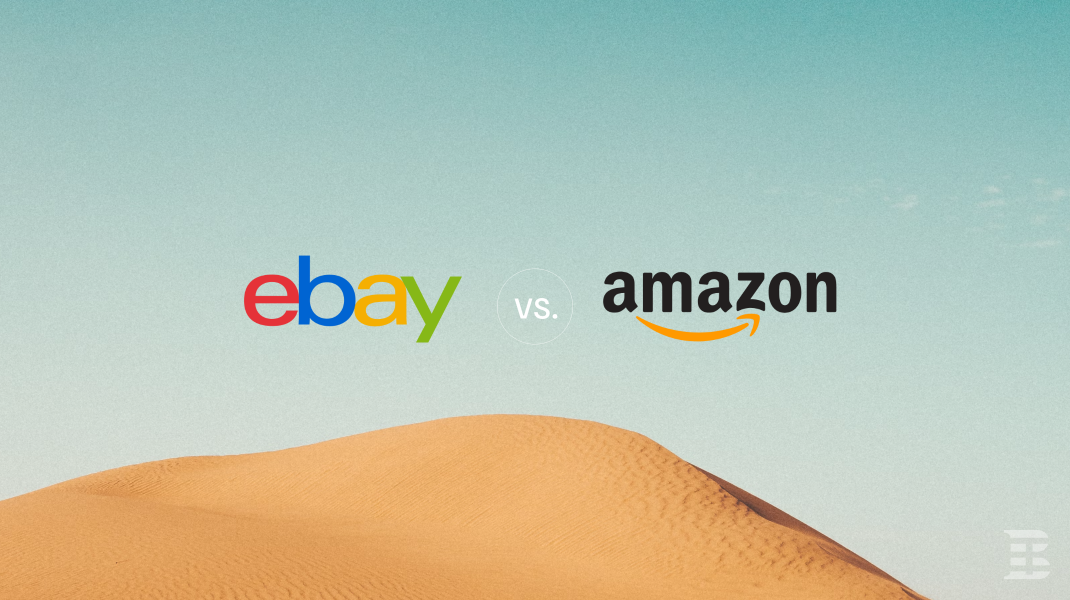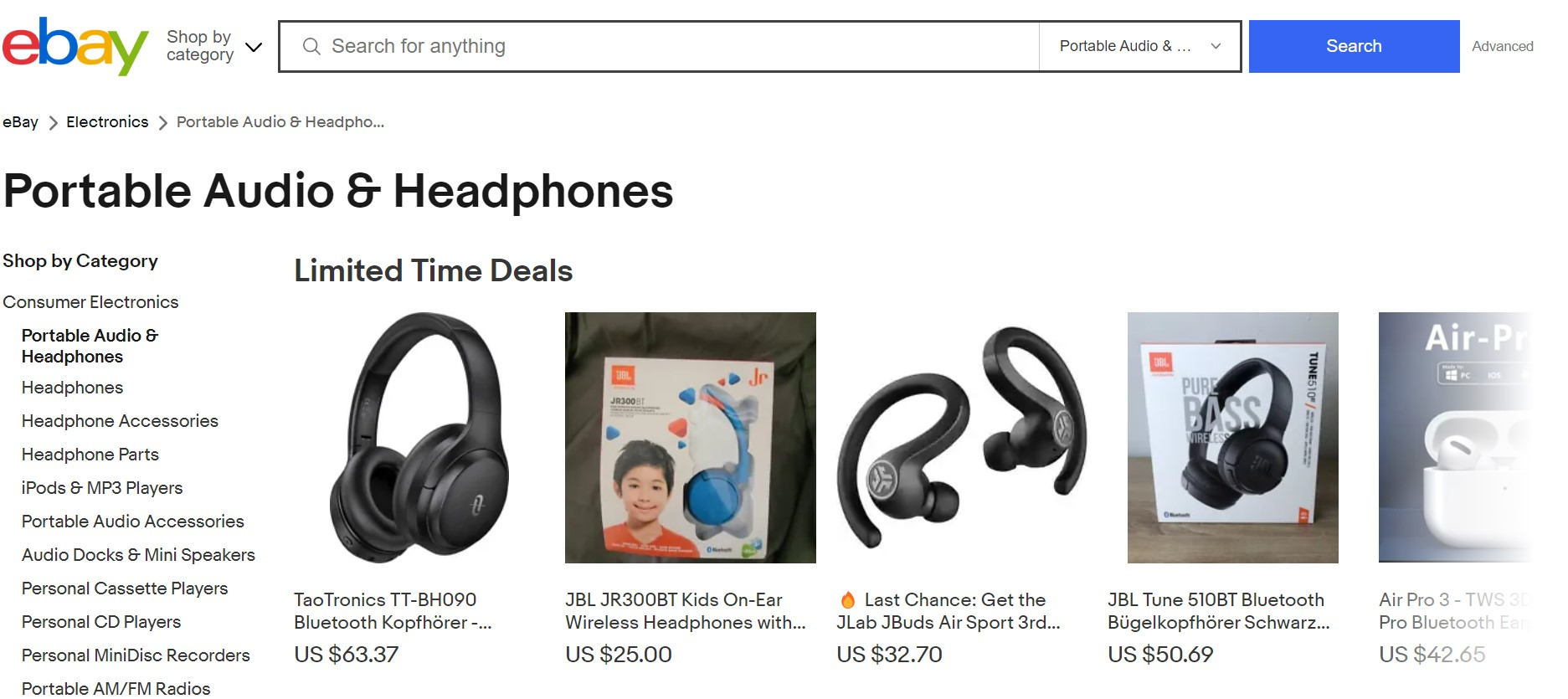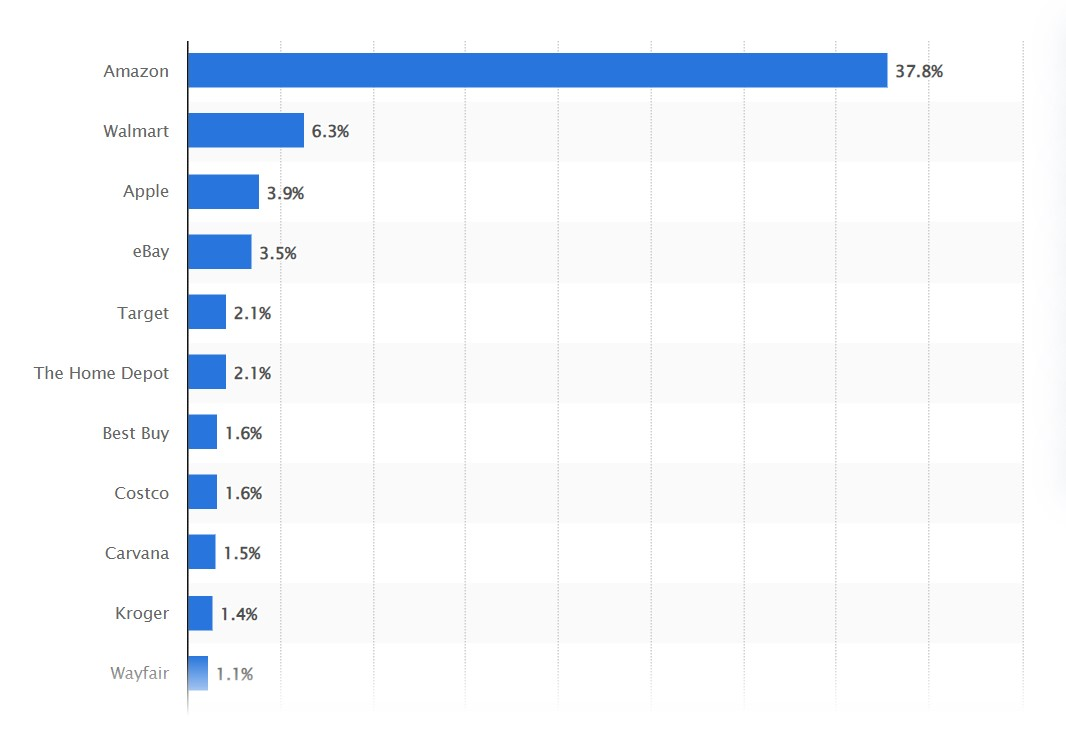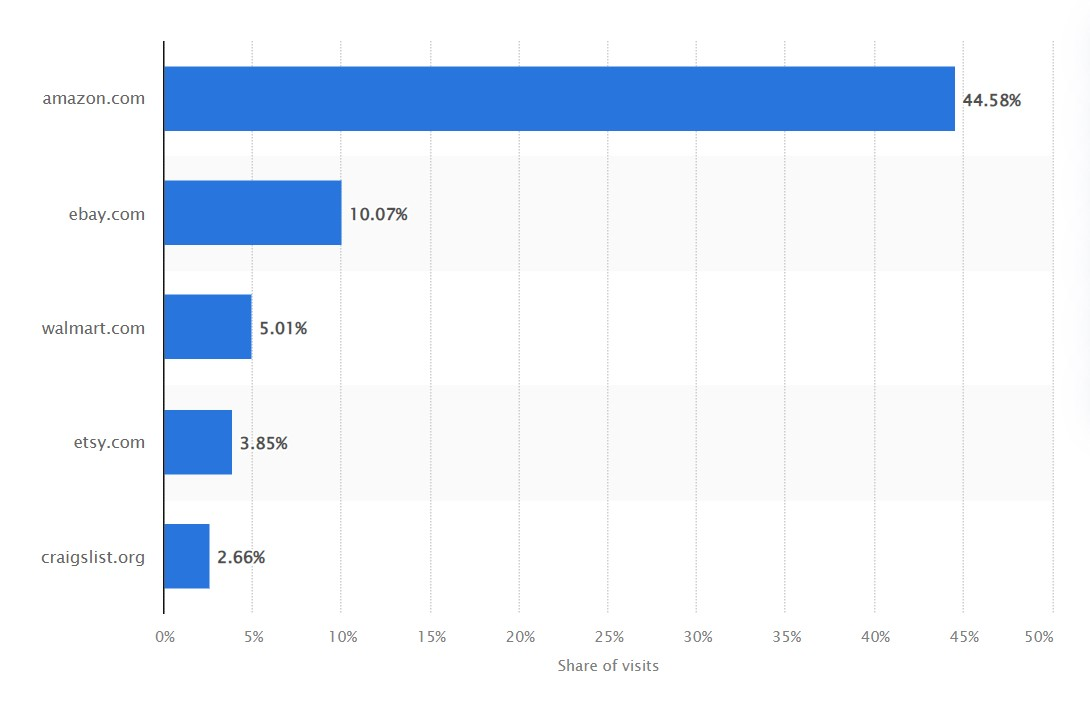eBay vs Amazon: Pros and Cons for Small Business Owners

As a small business owner diving into the world of e-commerce, choosing a marketplace to sell in can feel like deciding between two titans: eBay vs Amazon. Both sites are popular, with vast audiences, each offering unique opportunities and challenges.
In this article, we'll break down the pros and cons of each platform, and provide insights to help you make an informed choice.
Pros and Cons of Amazon and eBay
When considering the best places to sell online, the choice often boils down to a debate between two e-commerce giants: Amazon and eBay. These platforms have set themselves apart in the digital marketplace, becoming prime destinations for sellers worldwide.
When evaluating online selling platforms, a brief look at their pros and cons can significantly shape your business decisions.
Amazon
Amazon is now a byword for online shopping. Its consistent expansion through innovative products, different services, and strategic acquisitions keeps drawing in more customers.

Amazon
Pros
- Vast User Base: A huge audience to showcase your products.
- Streamlined Selling Process: Uniform product listings make the process straightforward.
- Robust Infrastructure: Services like Fulfillment by Amazon (FBA) handle storage and shipping. The FBA program is a game-changer for many, so it's worth exploring when figuring out how to sell on Amazon.
Cons
- Stiff Competition: Many sellers vie for attention in the same categories.
- Potential for Higher Fees: Depending on your sales strategy and volume.
- Stricter Seller Guidelines: Demanding performance and service standards.
eBay
Launched in 1995, eBay has evolved into one of today's leading online platforms where sellers showcase and trade their products, making it a compelling choice for e-commerce endeavors.

eBay
Pros
- Flexible Listing Types: Allows for auction-style selling and "Buy It Now" options.
- Personalized Branding: Sellers can have more distinctive storefronts.
- Diverse Product Appeal: Known for both new and unique or used items.
Cons
- Niche Market Perception: Sometimes viewed as a platform mainly for collectibles or second-hand items.
- Varying Buyer Traffic: This may not consistently match Amazon's vast audience.
- Fee Structure: Insertion and final value fees can add up, especially for high-value items.
Now you have a basic understanding of these two marketplaces. Let’s dive into their features and compare them.
If you already have a site and you are considering switching to a different platform, check out the article on how to choose an e-commerce platform.
Market Share
While both platforms dominate in their respective areas, Amazon has a larger share of the e-commerce market, accounting for nearly 38% of online retail sales in the US. eBay, in contrast, holds about 4% of the market. This difference reflects Amazon's expansive product range, including its own products and partnerships with major brands.

Market share of leading retail e-commerce companies in the United States (June 2022). Source: Statista
How Many People Buy From Amazon vs eBay?
Amazon
Determining the exact count of Amazon users is challenging since the company doesn't disclose specific user statistics. However, global estimates suggest that the platform has upwards of 310 million active users.
According to Statista, in April 2023, Amazon.com stood out as the top online shopping destination in the U.S. During that timeframe, it captured roughly 45% of the desktop traffic within the e-commerce and shopping segment. Trailing behind, eBay.com secured the second spot, drawing 10.07% of the visits.

Most popular e-commerce and shopping websites in the United States (April 2023). Source: Statista
In 2022, Amazon's shopping application took the lead as the most downloaded e-commerce app in the U.S., garnering close to 35 million downloads over the year.
eBay
eBay, though smaller in user base, still claims an impressive global user count.
During the second quarter of 2023, the American e-commerce giant reported around 132 million global active buyers, marking a 4.3% decline from the 138 million noted the previous year.
For mobile users in the U.S., eBay ranked as one of the top shopping apps, registering more than ten million downloads in 2022.
How Much Does It Cost to Sell on Amazon vs eBay?
Amazon Fees
Amazon's fee structure is primarily based on whether you're an individual seller or a professional.
Individual sellers pay a per-item fee ($0.99) plus a referral fee, which varies by category. For example, for the footwear category, the referral fee percentage is 15%.
Professionals pay a monthly subscription fee ($39.99) and a referral fee.
Additionally, if you use Amazon’s fulfillment service (FBA), there are associated storage and fulfillment fees.
Learn more about Amazon selling costs here.
eBay Fees
eBay charges an insertion fee when you list an item and a final value fee when the item sells.
Sellers receive a certain number of free listings per month (250), after which insertion fees ($0.35) are charged.
The final value fee is calculated based on the total amount of the sale, with an additional $0.30 for each order. Some categories also have additional fees.
Learn more about eBay selling costs here.
Which is Safer — Amazon or eBay?
Amazon
Amazon has built a reputation for prioritizing customer trust. With mechanisms like the A-to-z Guarantee, buyers are provided assurance against potential fraud or discrepancies in their purchases. Sellers, on the other hand, are equipped with detailed metrics, feedback systems, and guidelines to help them maintain high standards of performance and reliability.
eBay
eBay, with its longstanding history in the online marketplace, offers the Money Back Guarantee. This ensures that buyers can recover their funds if an item doesn't arrive or differs from its described condition. For sellers, eBay's robust protection features guard against undue claims, unwarranted chargebacks, and unfair feedback, helping maintain a level playing field.
Brand Presence and Identity
Amazon
On Amazon, the vast ocean of products can sometimes lead to a dilution of individual brand presence. The platform is structured in a way that you're often directly competing with Amazon’s own products and numerous other sellers. Your brand identity might get submerged beneath the platform's vast offerings.
eBay
eBay, conversely, offers a more open marketplace atmosphere. Sellers have the opportunity to personalize their storefronts, giving a distinctive feel and potentially fostering stronger brand loyalty among customers.
Return & Shipping Policies
Amazon imposes a universal return policy, which sellers must adhere to. This can sometimes be restrictive, especially for niche products. On eBay, sellers have the flexibility to define their return policies, allowing them to set terms that align better with their products and business models.
Regarding shipping, while Amazon provides FBA as a comprehensive solution, eBay offers the eBay Global Shipping Program and lets sellers work with various third-party logistics providers.
Customer Interaction
eBay provides a more direct line of communication between buyers and sellers. This can be beneficial for sellers who prefer hands-on customer service and direct feedback.
Amazon, while having a more streamlined communication process, might sometimes feel more impersonal due to its standardized system.
Wrapping Up
Deciding between eBay and Amazon boils down to your business goals and preferences. If you want to reach the broadest audience possible and don't mind strong competition, Amazon might be the choice for you. If you're looking for more flexibility, personal brand presence, and potentially a wider product range, then selling on eBay could be the better option.
Remember, it's not strictly an either-or decision. Many successful online retailers utilize both platforms to maximize their reach and revenue. Analyze your business's needs, consider your growth strategy, and choose the platform(s) that align best with your objectives. At the same time, you can always count on Lira Agency for improving your selling capabilities both on eBay and Amazon